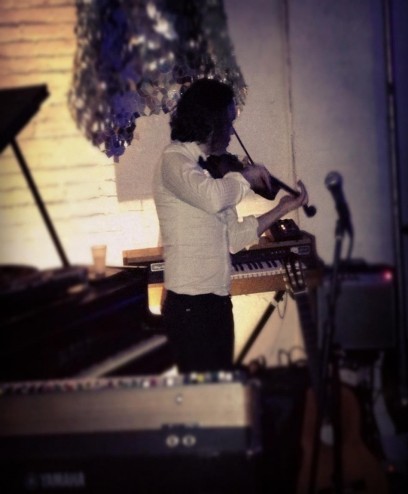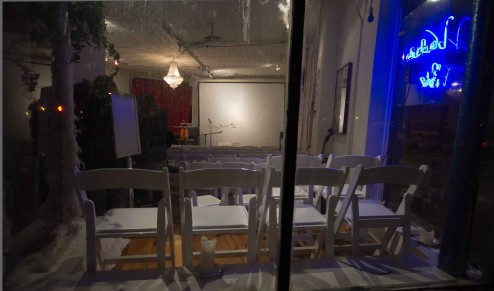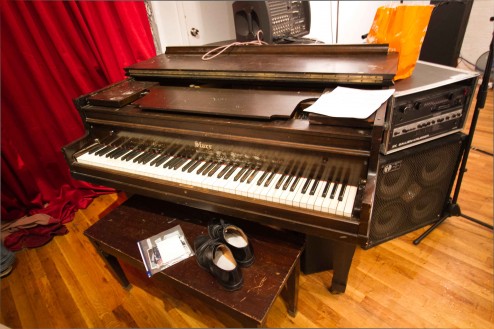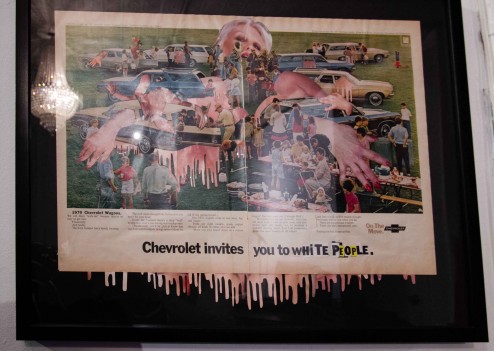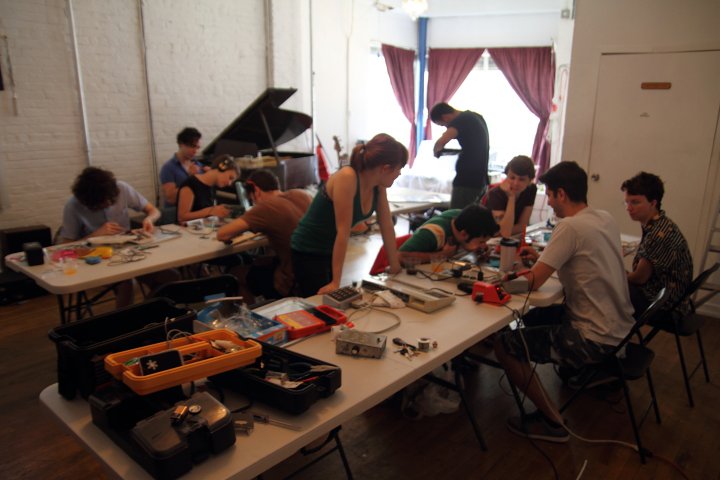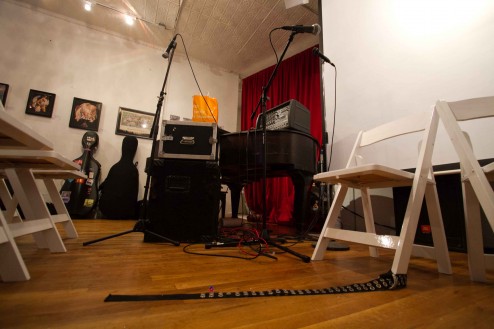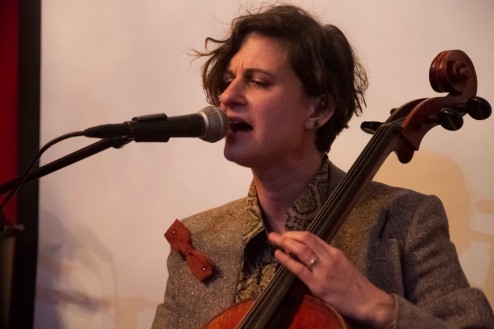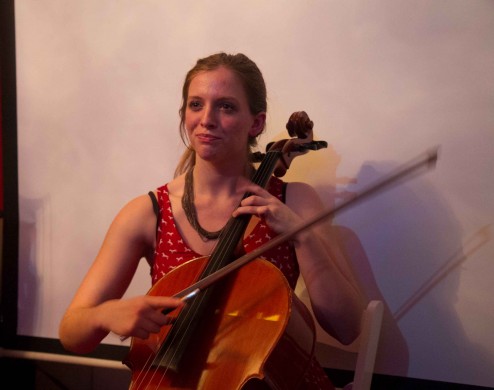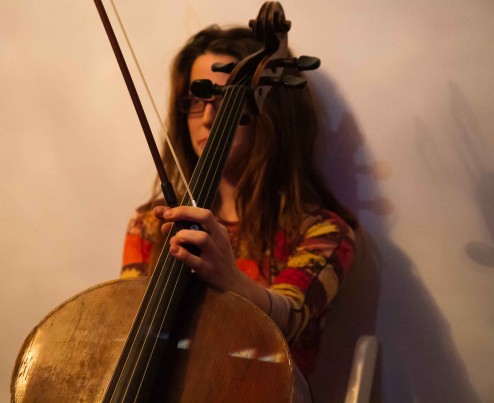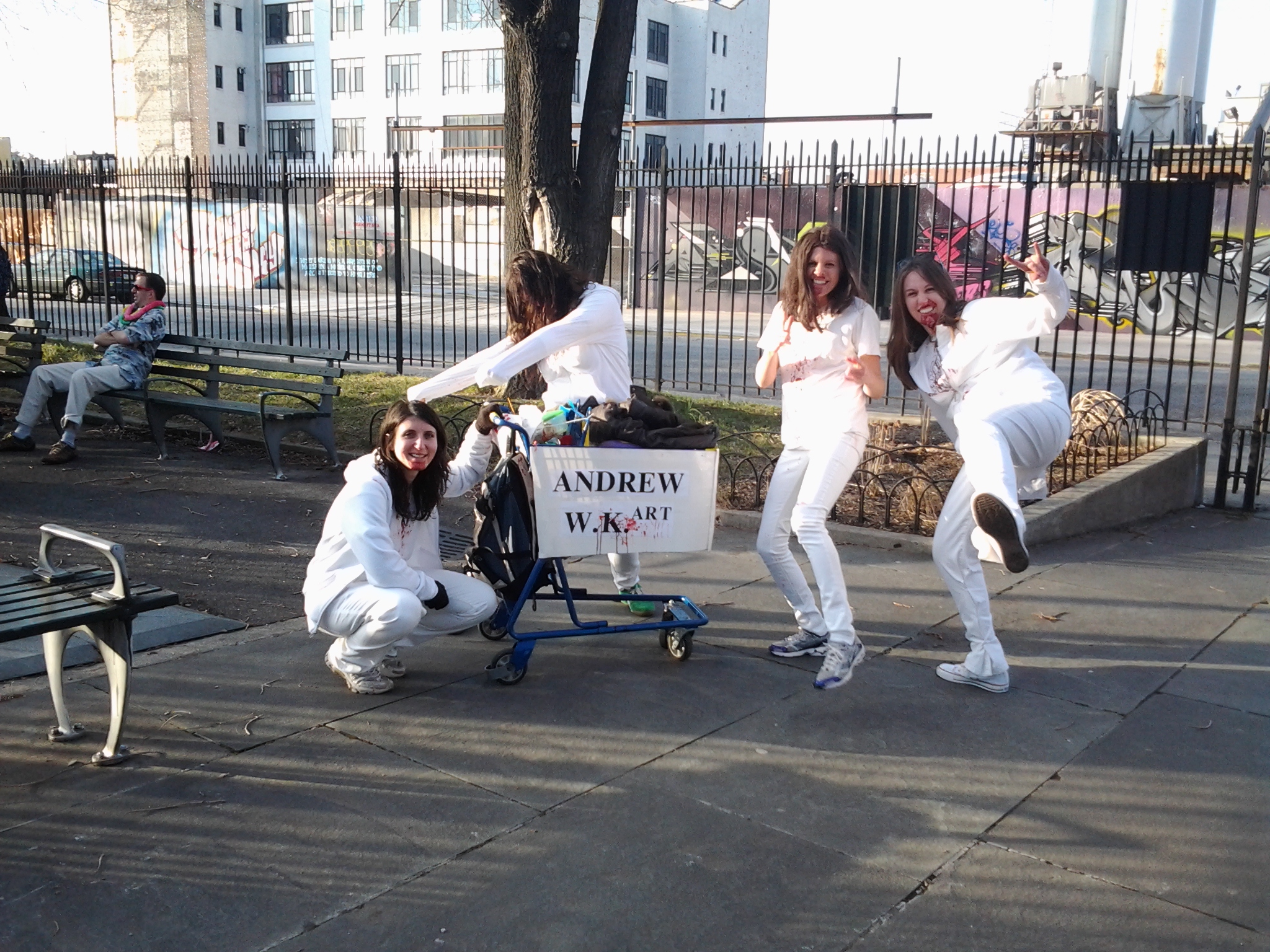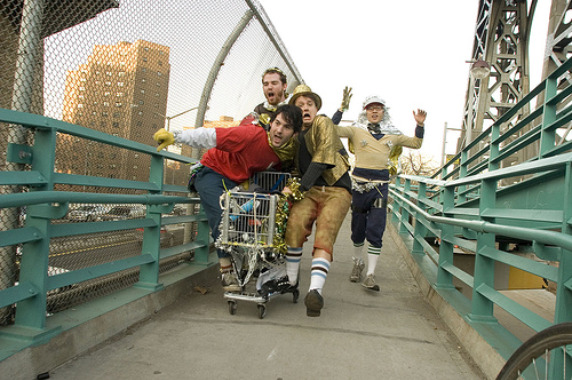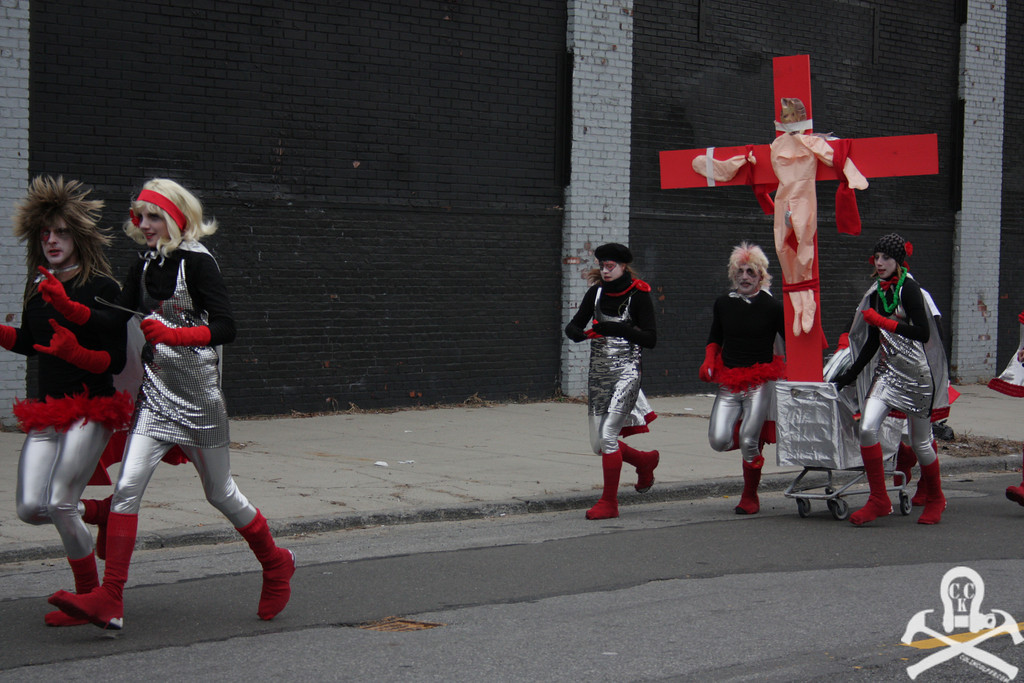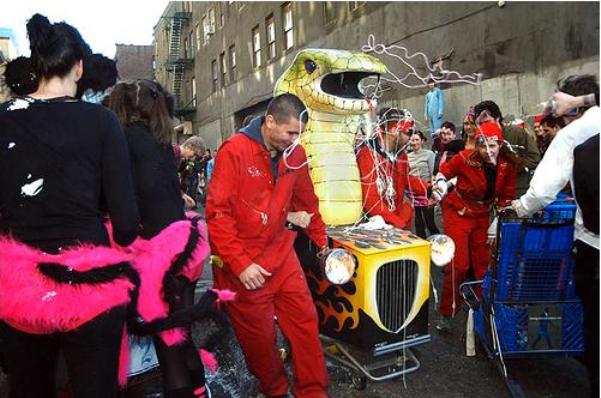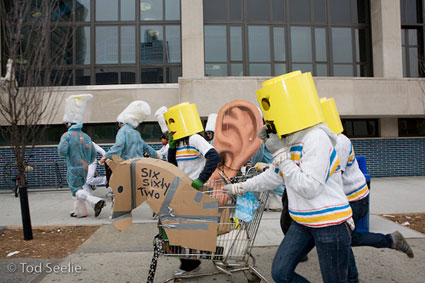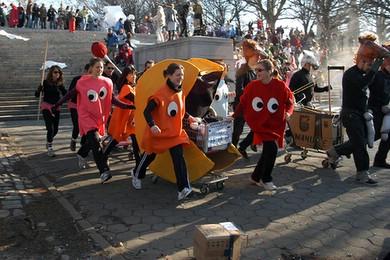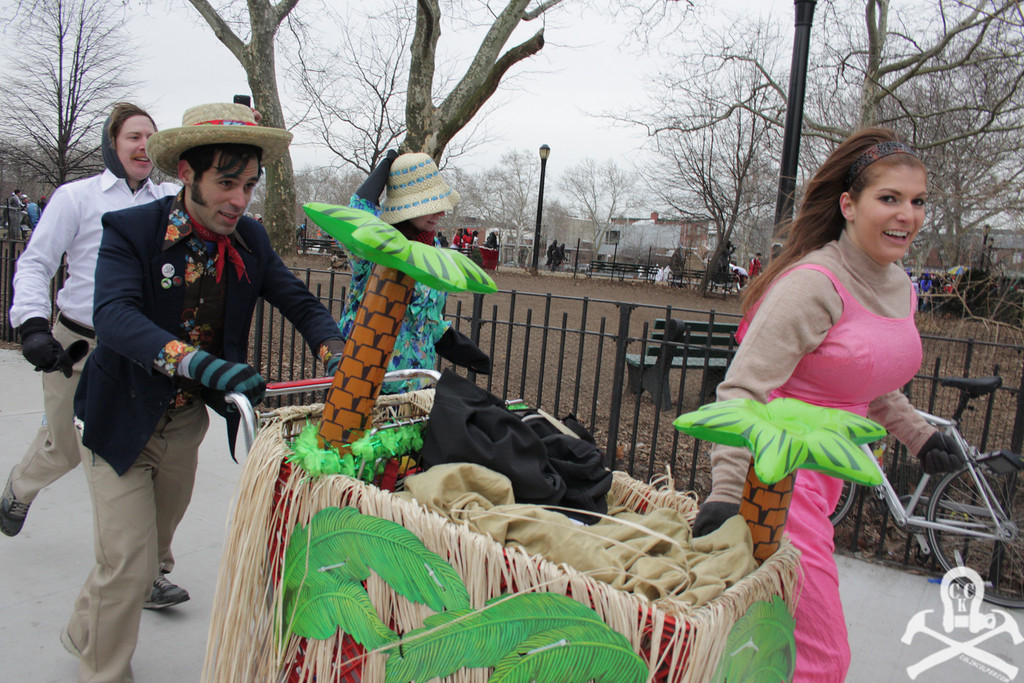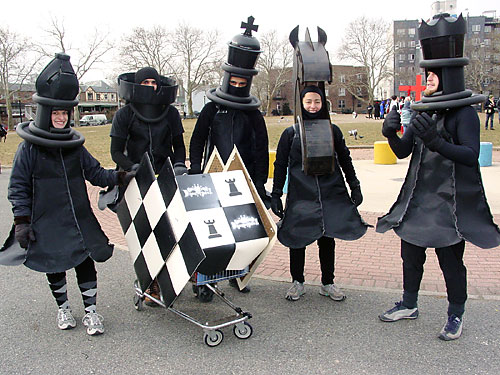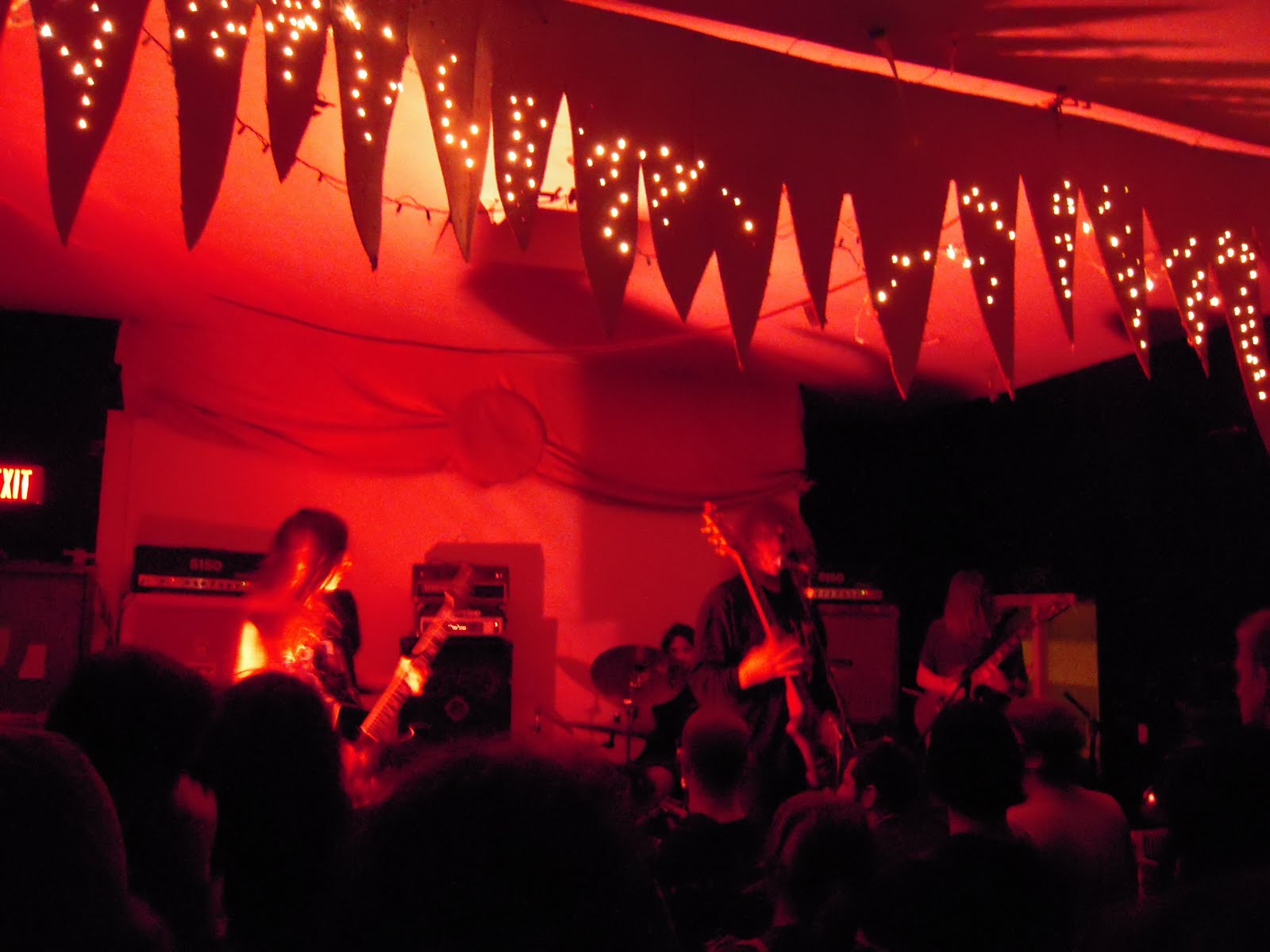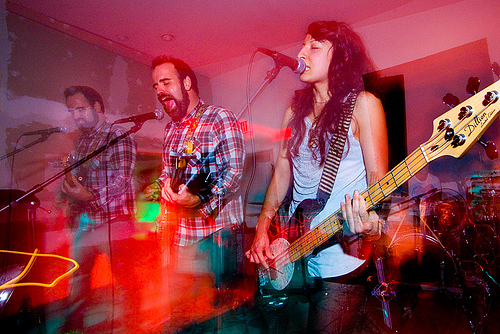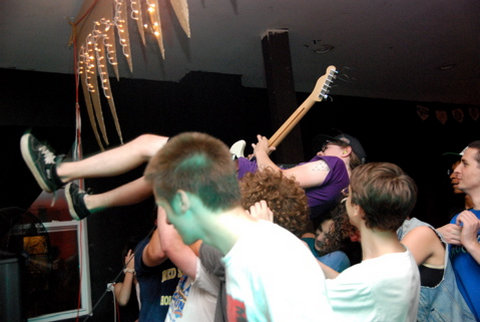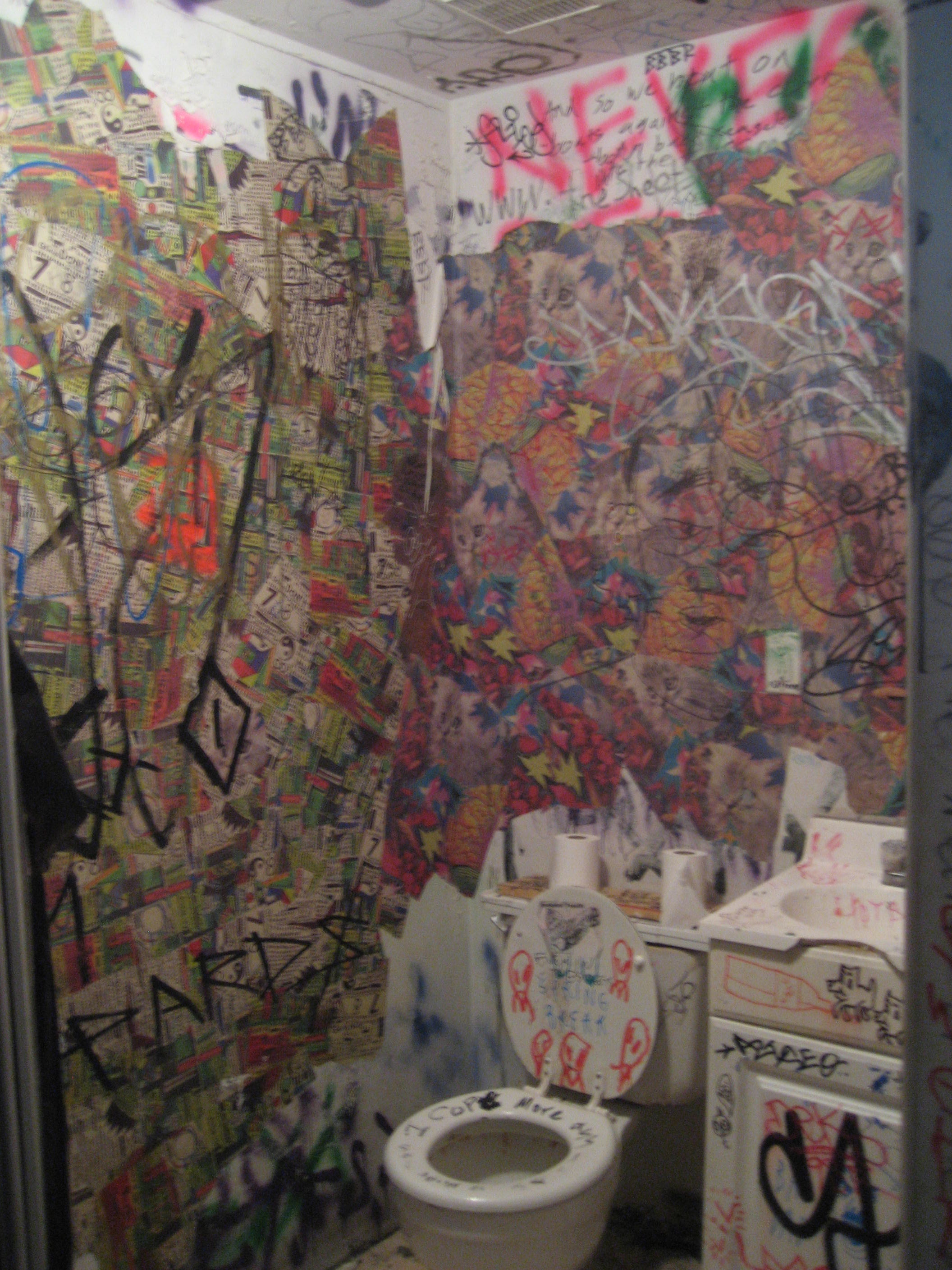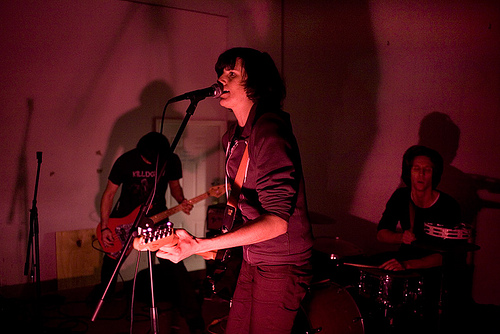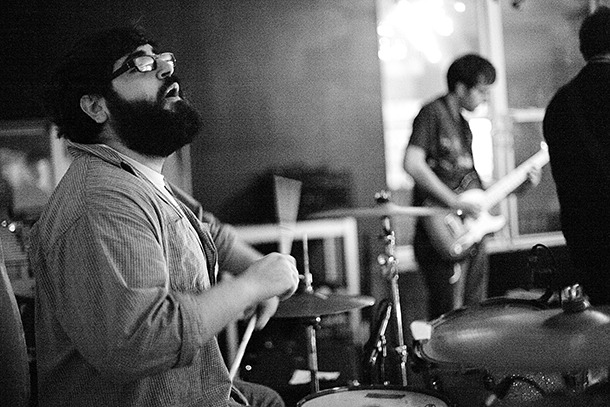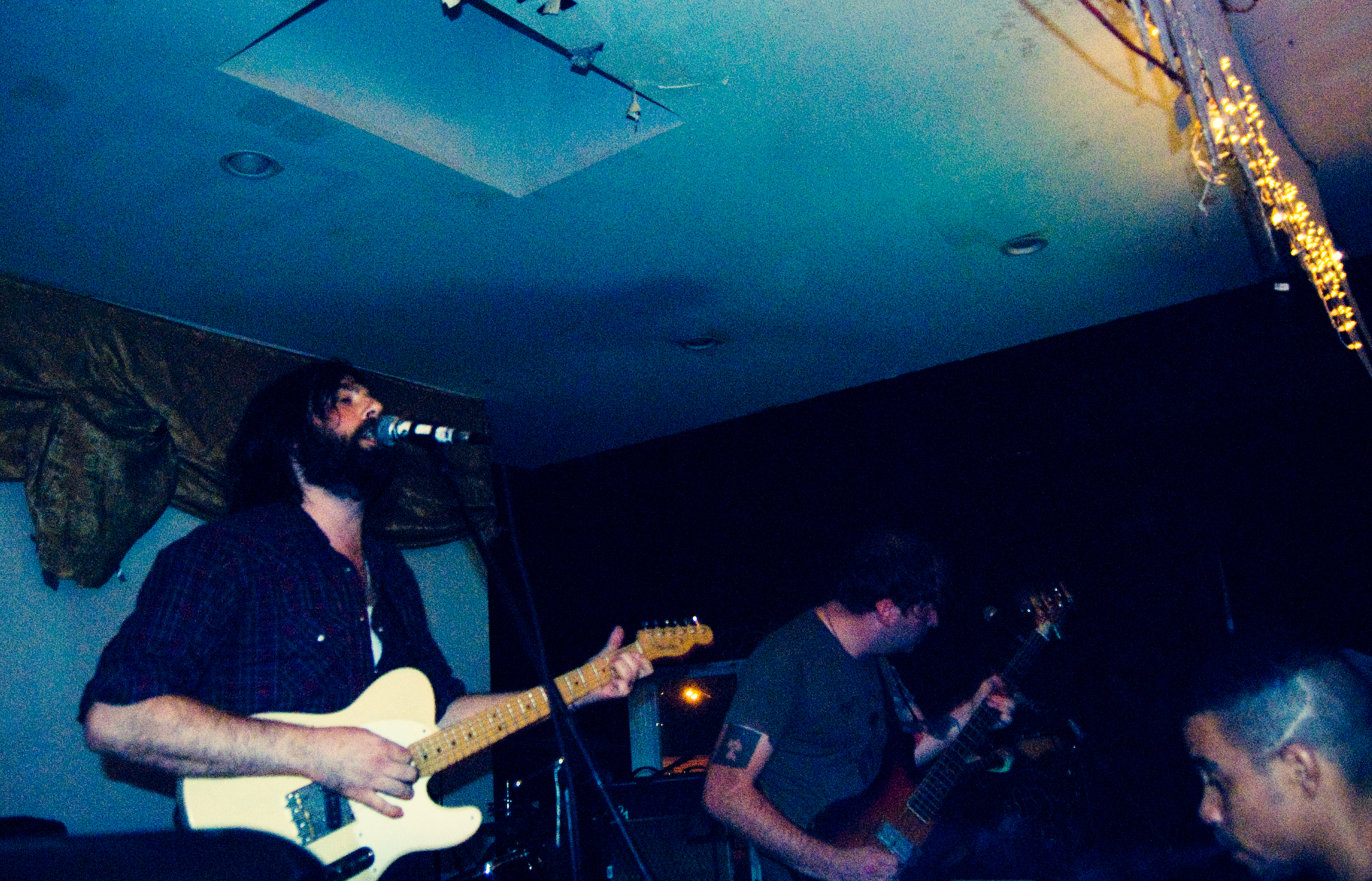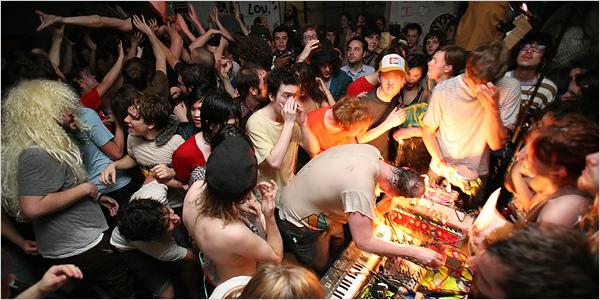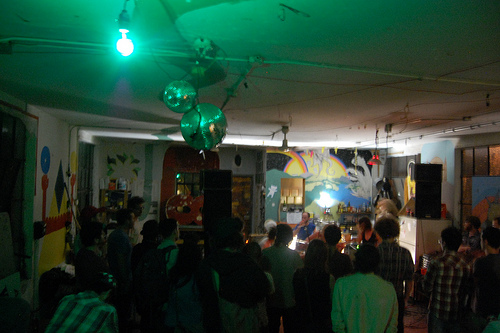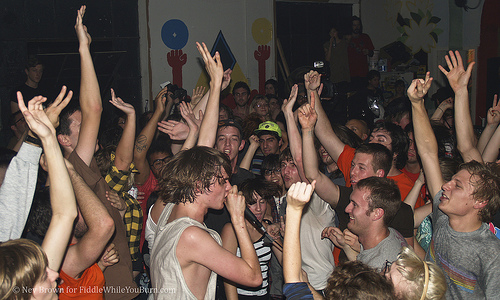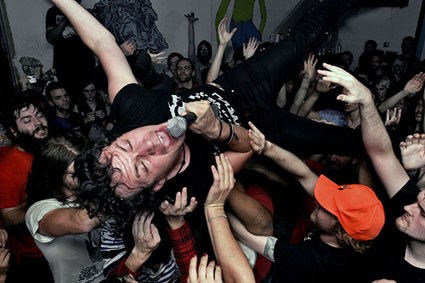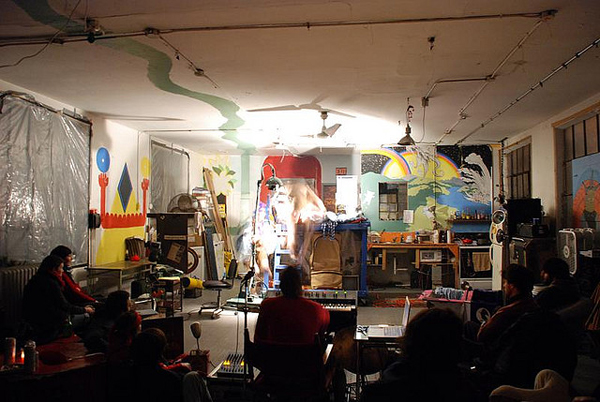vaudeville park
space type: art & music venue | neighborhood: williamsburg | active: 2008–2013 | links: website, facebook, twitter
Vaudeville Park is a plucky arts venue with wildly diverse programming. It sits right on the borderline (at least, the current one) between Williamsburg and Bushwick. Run by experimental composer and multi-instrumentalist Ian Colletti, Vaudeville Park has shows nearly ever night, including all kinds of music (from synth to neo-chamber to ladies of experimental music), literature, film (from Noir Night to avant garde), dance and performance art, gallery shows, comedy, discussions, workshops (from yoga to circuit bending), and more. The space has been active for almost four years, and is now starting to get a lot of attention from the media, including regular mentions from the likes of Time Out New York, Brookly Vegan, Artcat, and Rhizome. Ian is one insanely busy guy who is also incredibly passionate and enthusiastic about the work he does. Check out my interview with him, and then please, go see something amazing at Vaudeville Park!
brooklyn spaces: How did you get started with all this?
Ian: I’m from New York, born and raised, and I’ve been an artist and a musician pretty much my whole life. It felt like the early 2000s were a dark time for counterculture in Williamsburg. I mean, there was a lot of cool stuff going on for artists, but that was when groups like the Strokes and Interpol and Ambulance LTD, and really high-fashionisa galleries were huge. It was an appropriation of mainstream, cookie-cutter ideals into counterculture. It was like everyone who was in a band really just wanted to be a model in a Levi’s ad. Now artists have a chance to really represent themselves through their own savvy with the internet, but at that point there were just a few labels and magazines that promoted musicians. I was living with this guy from Fader magazine, and he was like, “Man, if you want to start your own weird art collective, you have to kiss these people’s asses.” I was like, No way. I just didn’t want to be part of this phony, arrogant, silver-spoon kind of thing. But I was really worried about the culture here, so in 2007 I stopped playing shows and performing, saved up as much money as I could, and turned my recording studio into an arts venue. The first show we had was Dreamtigers, by Brian Zegeer, who’s one of my best friends. He just headlined the Queens Museum “International 2012,” along with two of my other good friends, Ben Lee and Rachel Mason, both of whom have been really involved here. There’s an extreme synergy here that’s really important.
brooklyn spaces: Was it a nonprofit from the start?
Ian: Well, it was always nonprofit in its mission. We’re sponsored by New York Foundation for the Arts now; they picked Showpaper two years ago and they picked us last year. NYFA is good people, but we need our own 501(c)3, which we just went for, and we need to get larger grants.
brooklyn spaces: How do you pick your programming? Are you the only one who directs it?
Ian: Yes. Basically the mission of Vaudeville Park is to represent underrepresented artists of high craft. My goal is to pair the best minds and artistry and craft in music to the best visual and performance art. I really feel that people’s eyes have gotten bigger from constantly looking at things, but their ears have gotten much smaller. People don’t listen to records, they don’t really put effort into making records, and if they do it’s just ear candy, it’s less performance-based, there’s less heart and soul, it’s not as evolved. So I wanted to have a venue for counterculture music, like dark wave, coldwave, post-whatever, and new chamber and post-classical music. I felt that if I put the music in a gallery context, it would up the ante, like, “This music better be pretty damn good because these visual artists are so good.”
brooklyn spaces: So all the shows are music plus visual art plus something else?
Ian: Well, no. We have several different programs, and sometimes we combine them. There’s a gallery art program, with one show a month, either a group show or a few specific artists. Then there’s an archival film program, which includes one of our most famous shows, Noir Night. We’ve also had cartoon carnival stuff, we’ve had optics, we’re now working with the curators at Millenium Theatre and Anthology Film Archives, and we’re starting to have closer ties with the Kitchen. Then we have a TV program on Manhattan Neighborhood Network with my good friend Scott Kiernan, who does ESP TV. Then we have a performance art program. There are only four galleries and art spaces in New York City that host performance art. We’ve done a bunch of performances in the past, recently Esther Neff and The Penelopes and Performancy Forum. And finally we have the music program. We do workshops too, we’ve hosted a lot of extremely successful workshops, the biggest one that everyone constantly asks for is the electronics in music workshop for circuit bending. But we just can’t do it again without funding.
brooklyn spaces: What about your own art? What kind of music do you play?
Ian: I do a lot of stuff, I’m a multi-instrumentalist, singer, composer. I was the first featured soloist in the Brooklyn Philharmonic Symphony Orchestra in November, and I made all these crazy handmade instruments and soundscape synthesizer stuff. I’ve done a lot of film scores, dance scores, music for fashion. I mostly do new works for chamber. The music that I’m doing now, the best way to put it is the orchestral coldwave height of pop that was never made. It’s like post-romantic coldwave blitz with eighteenth- to nineteenth-century post-classical music, and also a lot of Latin jazz and obscurities.
brooklyn spaces: Tell me about some of your favorite shows here.
Ian: One of my favorites was a Crystalline Flux installation, because one of the things I want to push for Vaudeville Park is doing something totally new, something that’s almost like a trip back to Bauhaus, or Kaprow’s Happenings, which were installations and events where a whole art space was transformed into a stage full of specific performers. So a bunch of my friends—Ben Lee of Beta Copperhead, Brent Arnold, Anthony Johnson, Caleb Missure, and Naomi Rice, who’s in a band Next Wave Festival—we transformed the whole space into a stage that would specifically fit one performer, kind of like a static music video. That was one of the most special art events I’ve ever been to. Also Noir Night is one of my favorite ones, I really think it works with the intention of the space. And I really like the Dreamtigers and Avatar Atavistic, and Myra Brim’s gallery show “April Sky,” and Christy Walsh’s dance piece, this flamenco classical guitar thing. I like pretty much everything here, it’s kind of a blur.
[below, from Ladies of Experimental Music: Leah Coloff, Meaghan Burke, and Valerie Kuehne; photos by Maximus]
brooklyn spaces: Let’s talk a little more about the neighborhood. Do you feel like being here on this weird cusp between Bushwick and Williamsburg affects the space?
Ian: Vaudeville Park is not a Williamsburg space, I’m not trying to make it “Williamsburg-y.” It’s the gateway to Bushwick arts, since we’re on the first block of Bushwick. During the last Bushwick Open Studios, the L train was down and we were the first place people saw. That’s a great festival, Arts in Bushwick works really hard.
brooklyn spaces: You’re getting a lot of attention from the media lately, but ultimately, this is a small space. Is there any worry you’ll get too well known?
Ian: No. Lots of shows here are really packed, but I’m trying to only do things that make sense in a smaller space. This is an arts venue, it’s done with no money but with the best programming and art possible. And by being good to people and treating artists well and believing in this community, you can go a long way. People who have run spaces like this, they do it for a couple years and then give up, and they have every damn right to, because it can be really hard and really frustrating. But what happens if you don’t give up? What happens if every time you think, “This is as far as I can go,” you’re like “Let’s go further”? What happens if we just keep expanding more and doing better? I’m really excited and happy to be doing this and to have all these special people involved. I’m really lucky.
***
Like this? Read about more arts venues: Chez Bushwick, Gowanus Ballroom, Bushwick Starr, Monster Island, Bushwick Project for the Arts, Fort Useless

